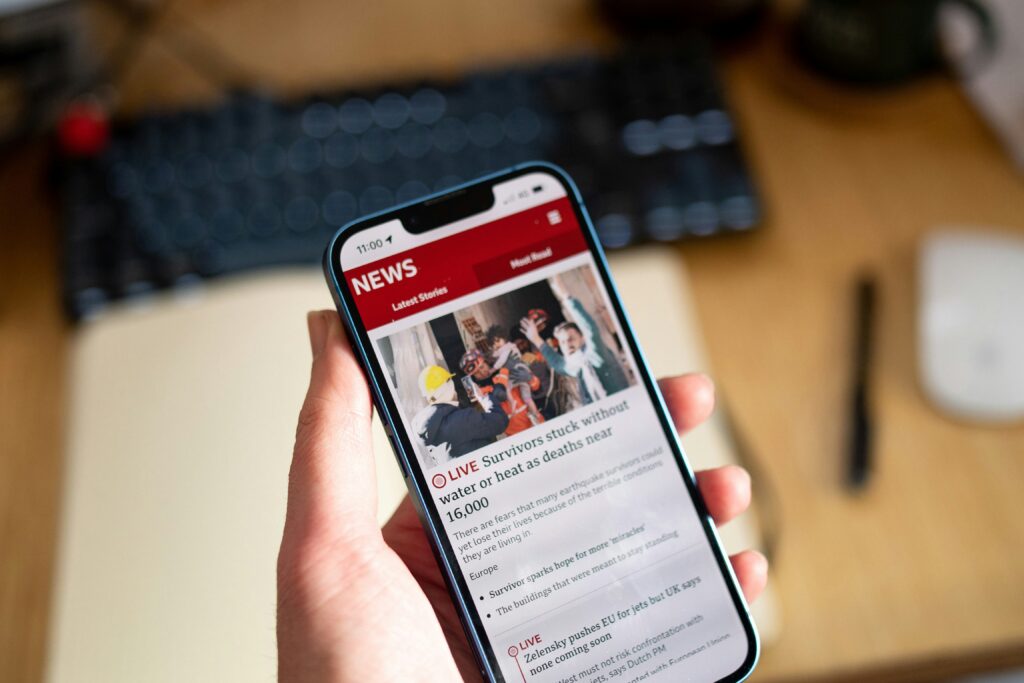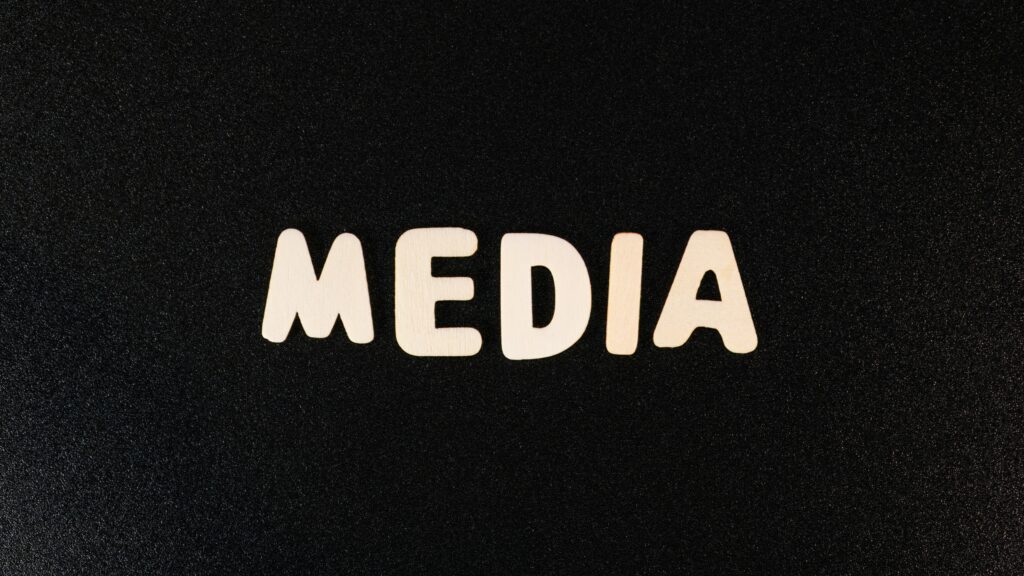Intro: Why the Media Industry Still Has Room for You
Media has never stood still—but lately, it’s moving faster than anyone expected. What used to be a world dominated by print and broadcast is now a full-blown ecosystem of TikToks, YouTube explainers, branded newsletters, and AI-assisted newsrooms. Content is being made everywhere, for every kind of audience, across more platforms than ever. Demand hasn’t shrunk—it’s exploded. But it no longer looks just like a newsroom. It looks like a studio apartment doubling as a podcast set or an iPhone lens in a kitchen shooting recipe reels.
This shift blends traditional journalism with digital-first production, influencer culture, and agile marketing. The lines are blurred. A digital producer today might handle everything from shooting and editing to SEO and analytics. The roles are diverse, often nonlinear, and in constant evolution.
The takeaway? If you’re sitting on the sidelines waiting for clear rules or a perfect entry point, you’ll miss the window. Instead, adapt in real time. Experiment while you learn. Build projects before anyone asks for your portfolio. The rules are still being written—and that’s your advantage. Build your way in.
Step 1: Understand the Landscape
The media industry in 2024 is a sprawling ecosystem—but also more accessible than ever if you know where to look. Start by understanding the terrain. The biggest opportunities sit in five sectors: news, entertainment, marketing, production, and social media. Each one is evolving fast, shaped by shifts in technology, audience behavior, and platform dynamics.
Traditional media—legacy newspapers, broadcast, production houses—are still hiring, but the focus is tighter: niche expertise, data literacy, and cross-platform skills. Digital media, on the other hand, is booming. Startups, agencies, and creator-backed brands are hungry for talent that moves fast, adapts quickly, and can turn strategy into content in a single sprint.
Three roles you’ll hear a lot about: content strategist, media analyst, and podcast producer. Content strategists align stories with business and platform goals—they think in multi-format, not just words and video. Media analysts dig into audience data to find out what’s working and what’s not. And podcast producers? Still in hot demand, especially those who can do more than cut audio—think story structure, sponsorship management, and cross-channel promotion.
Before you get overwhelmed: this isn’t about mastering everything. It’s about understanding where you fit and staying sharp enough to move when opportunities show up.
Step 2: Build Your Skills (Before You Apply)
Before chasing job boards, you need a solid foundation. Media is about clear communication—so your writing, editing, and storytelling skills should be sharp. That doesn’t mean you need a Pulitzer, but if you can’t explain an idea in a clean paragraph or cut a 30-second video that holds attention, pause and go back to basics.
Core tools matter. Get comfortable with the Adobe Suite (Premiere Pro, Photoshop, Audition if you’re into audio). Final Cut works too, especially if you’re deep in video. Canva—while looked down on by some—is fast, flexible, and great for social-first formats. Knowing these tools won’t land the job alone, but not knowing them can lose it for you.
Content isn’t made in a vacuum. Learn how to read trends and why they matter. What’s blowing up on TikTok? What just tanked on Netflix? Pattern recognition helps you pitch smarter content—and speak the same language as the people hiring.
As for learning these skills, there’s no shortage of options. Free: YouTube tutorials, Coursera, Skillshare trials, even Reddit threads. Paid: LinkedIn Learning, Adobe tutorials, or niche masterclasses in things like storytelling or podcast editing. Bottom line—pick a route, commit, and stop waiting for a classroom to tell you to start.
Step 3: Develop a Personal Brand
In today’s media market, hiring teams don’t just Google you—they judge you by what shows up. Your online presence isn’t just a supplement to your résumé; in many cases, it is your résumé. Before you apply, make sure you’ve got a clean, thoughtful digital footprint. That doesn’t mean having perfectly rehearsed headshots on every platform. It means being findable, clear about what you do, and showing just enough of your voice to stand out.
Start with a stripped-down portfolio site—or even a solid LinkedIn that highlights creative work. Substack newsletters, TikTok explainers, podcast clips—whatever your medium, pick what best reflects your style and post with regularity. A half-finished blog from 2020 won’t help you.
Consistency builds familiarity. Even if your following is small, frequent posting shows you’re active and invested. You’re not aiming for digital perfection. You’re proving you know how to show up, communicate, and hold attention—skills every media employer wants.
Be real. Try things. Leave the try-hard polish behind. Authentic creators win because they’re trustworthy. That’s your brand. That’s your edge.
Step 4: Start Creating Now
Before you score your first media job, start acting like you’re already in it. The most effective way to stand out? Make things. Put work into the world that you can point to. By creating publicly, you build skills, momentum, and credibility all at once.
Build Your Own Media Platform
You don’t need anyone’s permission to start. Choose a format and platform that suits your strengths:
- Start a blog if you’re a writer with strong opinions or insights
- Launch a YouTube channel to show off video, editing, and on-camera skills
- Create a newsletter to build an audience around a niche you care about
These aren’t just passion projects. They’re proof of concept. Employers and collaborators want to see what you can do.
Real Content, Real Experience
In media, theory can only take you so far. Those who create consistent, quality content build instincts and fluency no classroom can replicate.
- Publishing regularly builds your creative muscles
- Making mistakes publicly teaches resilience and technical problem-solving
- Analytics and feedback loops show you what’s resonating—and what’s not
Collaborate for Growth
Partnerships are a powerful entry point. Guest posting, podcast interviews, and joint video series allow you to:
- Cross-pollinate audiences
- Build credibility by association
- Expand your skillset through collaboration
Even small collaborations can grow into major opportunities down the road.
Small Wins = Big Story
Don’t wait for recognition to value your work. Every post, project, and pitch is a piece of your professional story.
- Did a thread gain traction on LinkedIn? That’s a case study
- Got your first 100 newsletter subscribers? That’s audience development
- Shot and edited a vlog on your phone? That’s real-world production experience
These may feel minor in the moment—but they add up. In the media industry, momentum matters.
Step 5: Get Industry Exposure
Breaking into media isn’t just about what you know—it’s about who knows you and how you show up. Internships are still one of the fastest ways to get your foot in the door. Don’t spray your résumé everywhere. Target companies and roles that align with your skills or interests. Apply early, follow up, and treat the position like a real job. Show up, contribute, ask questions, and build actual skills you can point to later.
Media events—virtual or physical—are another strong play. Don’t just attend and lurk. Ask questions, connect with speakers, follow up with attendees who vibe with your path. These encounters often lead to freelance gigs, collaborations, or referrals down the line.
Online, industry spaces live on Reddit threads, Discord channels, Twitter chats, and slack communities. Lurk less, post more. Share resources, ask smart questions, and be helpful. You’ll build name recognition—all without leaving your laptop.
Lastly, networking only works when it’s real. Forget the copy-paste connection requests. Comment on someone’s work. Message them with a specific compliment or thoughtful question. Ask about their current project—not just their job title. A LinkedIn contact means nothing if there’s no actual relationship behind it.
Step 6: Land That First Role
Breaking into media isn’t just about talent—it’s about translation. You’ve got to take your creative skills and present them in a way both corporate and creative teams can understand. That starts with your résumé. For a brand agency gig, lead with strategy and results. For a video production house, highlight your storytelling chops and editing experience. One version of your résumé won’t cut it.
Hiring managers scan for fit quickly. If your application feels generic, it’s ignored. So do the legwork. Understand their mission, language, tone—and mirror that, intelligently, in your cover letter and portfolio. This isn’t fluff; it signals that you’re already thinking like one of them.
And when the interview comes? Focus less on just rehashing your résumé, and more on connecting the dots. Media interviews aren’t just Q&A—they’re mini pitch meetings. Tell a story: who you are, what you’ve built, and how you solve problems. Be the person who brings clarity, not just creativity.
Bonus Insight: Where Tech Meets Media
The line between media and tech isn’t just blurring—it’s getting rewritten. In anything from journalism to video production, content creation is now tightly linked with tools driven by automation, data, and decentralization. AI is no longer a fringe tool—it’s embedded in workflow. From GPT-assisted scripting to auto-captioning and thumbnail testing, creators who know how to pair tech with storytelling are already ahead.
But it’s not just AI. Want a future-proof skillset? Learn how to interpret content data, build narratives from it, and understand blockchain’s role in media ownership and distribution. These are the emerging currencies of modern media careers.
The key: stay curious. Subscribe to niche newsletters. Watch how creators in other industries use tools. Break things and learn. Sitting still isn’t an option here.
Want to go deeper? Read: The Intersection of Media and Technology: Innovations Shaping the Future
Final Takeaway: Go From Consumer to Creator
Breaking into the media industry isn’t about waiting for permission—it’s about making space for yourself in a competitive, constantly evolving environment.
Start Where You Are
No one begins with the perfect résumé, massive following, or next-level skills. What matters is getting started.
- You don’t need insider access to begin creating
- Focus on progress, not perfection
- Build momentum by showing up consistently
Consistency Beats Perfection
In media, perfection is often subjective—and overrated. What matters more is commitment and steady growth.
- Stay active, even when feedback feels minimal
- Each project improves your skills and builds your credibility
- Audience trust comes from reliability and realness
Build the Opportunity You’re Looking For
If you don’t see a clear path into the industry, create one. Many of today’s leading voices didn’t follow a traditional route—they launched side projects, started podcasts, or built newsletters that carved their space.
- Launch a self-initiated series or show
- Turn gaps in the market into niche content opportunities
- Share your journey publicly—it draws collaborators and creates traction
You’re not just applying for jobs. You’re showing the world how you think, create, and lead. That makes you someone worth watching—and hiring.



